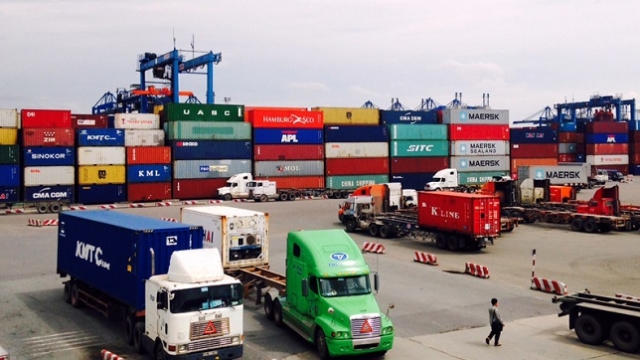National Focus
Three high risks to Vietnam’s economic outlook
While Vietnam’s prospects remain positive, World Bank said that the authorities should address the heightened social, financial, and fiscal risks.
The Vietnamese economy could expand by around 4.8 per cent in 2021 and converge toward the pre-pandemic GDP growth rate of 6.5 to 7 per cent from 2022 onward, World Bank said in its latest report.
This projection remains positive, but it is 2 percentage points lower than the one in the December 2020 because of the negative effects associated with the latest Covid-19 outbreak and is subject to further risks to the downside.
World Bank noted that the projection should be made with caution as serious uncertainties remain around the magnitude and duration of the pandemic, including the rise of new variants and the pace of vaccination in Vietnam and in the rest of the world.
If these risks materialize, Vietnam’s economic recovery will be delayed, and the GDP growth rate in 2021 will be lower than the projected 4.8 per cent. The convergence to the historical growth trend and fiscal consolidation in the medium term will also be slower than anticipated.
While Vietnam’s prospects remain positive, World Bank stressed that the authorities should address the heightened social, financial, and fiscal risks.
Firstly, it should focus on the social consequences of the crisis.
The impact of the Covid-19 pandemic on the labor market and households has been exacerbated by the February and April outbreaks. Not only has the pandemic reduced workers’ earnings, but it has also created deeper inequalities through its differentiated impact across income groups, sectors, genders, and locations.
“The authorities should consider strengthening the coverage, targeting, and benefit levels of the country’s social protection programs to ensure that current and future victims of natural or economic shocks receive adequate support,” recommended World Bank.
Secondly, Vietnam need to watch for financial sector risks raised by the crisis.
While new or restructured bank credit offers a welcome buffer to affected businesses, it also contributes to transferring the risk from the real to the financial sector.
The monetary authorities will need to be vigilant about the rising risks associated with nonperforming loans, especially in the banks that were already undercapitalized before the pandemic.
It would be useful to adopt a resolution plan for nonperforming loans, and to develop a well-defined mechanism for dealing with weak and troubled banks, while continuing to recapitalize banks to meet Basel II requirements.
Thirdly, the country also needs to watch for fiscal risks.
While the government still has sufficient fiscal space, with a debt-to-GDP ratio of around 55.3 per cent of GDP as of end-2020, international experience has demonstrated that the fiscal situation could deteriorate relatively quickly if the current outbreak is not rapidly controlled or new outbreaks materialize in the coming months.
The government may be required to expand its fiscal assistance package, which has been modest so far, while revenue might be negatively affected by a weaker-than-expected economic rebound.
At this stage, the fiscal risk appears under control but should continue to be closely monitored, especially as it relates to the financial health of state-owned enterprises, which could lead to contingent liabilities, World Bank noted.
World Bank approves $321 million programs to support Vietnam’s recovery efforts
Resolution 68: A turning point in Vietnam's private sector policy
As Vietnam sets its sights on becoming a high-income country by 2045, Resolution 68 lays a crucial foundation. But turning vision into reality requires not only good policy - but also unwavering execution, mutual trust and national unity.
Vietnam plans upgrade of Gia Binh airport to dual-use international hub
Vietnam plans to upgrade Gia Binh Airport in Bac Ninh province into a dual-use international airport to support both military and civilian operations, the government said on Friday.
Lives under the scorching sun: Outdoor workers racing against climate change
Under unforgiving conditions, the outdoor workers - the backbone of urban economies - endure the harshest impacts of climate change while remaining overlooked by social safety nets. Their resilience and struggles highlight the urgent need for better protection in the face of rising temperatures and precarious livelihoods.
CEO Group chairman unveils guide to Vietnam real estate for foreigners
Doan Van Binh, Chairman of CEO Group and Vice President of the Vietnam National Real Estate Association, introduced his latest book, “Vietnam Real Estate for Foreigners,” at a launch event in Hanoi on Friday.
Women leading the charge in Vietnam's green transition
Acting for increased women’s participation and leadership in climate action, Vietnam can accelerate a transition that is more inclusive, just, and impactful.
Steam for girls: A journey of passionate and creative girls
The "Steam for girls 2024" competition provides a creative platform for Steam and an opportunity for students to connect with peers from various regions within Vietnam and internationally.











































